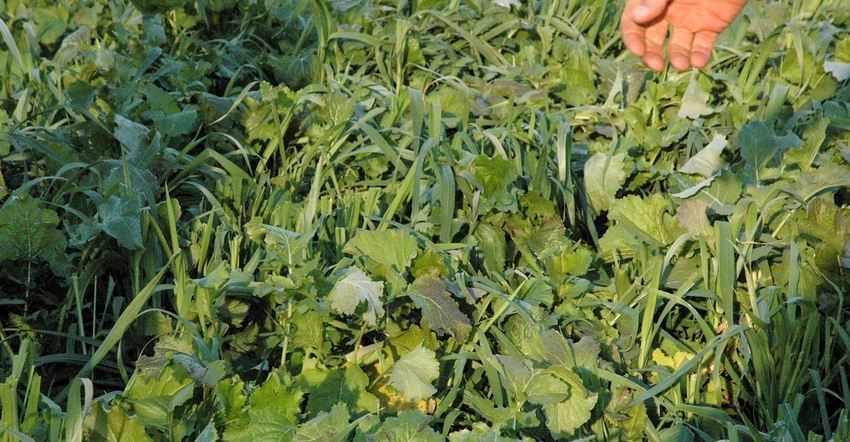July 15, 2020

Cover crops are planted when a crop field would otherwise be fallow. They are an effective way to reduce soil erosion, add organic matter, improve soil tilth and water infiltration, and reduce runoff. If forage is in short supply, grazing cover crops can help fill the void.
Brassicas such as turnips and radishes should be planted between July 15 and Sept. 15. Plant early to maximize forage yield for grazing. These crops will not overwinter and should be grazed by Jan. 1 to use the forage.
Cattle will graze the aboveground material and will pull the bulbs out of the ground and eat them. Limit consumption of brassicas to 75% of the animal's diet to prevent metabolic issues, including bloat.
Oats are a good companion crop for brassicas because they do not survive cold winter temperatures, eliminating the need to terminate the cover crop in spring. It also should be noted oats can be planted from July 15 to Oct. 15.
Plant cover crops later
Small grains such as wheat, cereal rye and triticale can be planted later in the autumn up to early November. They will provide some autumn grazing and will overwinter to provide early spring grazing.
Cereal rye will provide the most forage, but quality rapidly declines in spring as the plants mature. Wheat will not provide as much forage, but it will maintain higher quality later in the spring. Triticale is a cross between wheat and rye and falls between the two in both yield and quality.
Legumes such as clover provide high-quality forage and can be planted in the early fall. If allowed to grow long enough in the spring, they can provide some nitrogen to the following crop. Legumes that are terminated early in spring will not have adequate time to produce nitrogen. The nitrogen fixing bacteria are not active when soil temperatures are cool.
Watch chemical applications
Be mindful of the pesticides used on the cash crop planted this growing season. Some herbicides will have enough residual activity to prevent certain cover crops from germinating.
Additionally, some pesticides have grazing and haying restrictions. Check product labels for information about crop rotations and grazing restrictions.
Visit the Midwest Cover Crop Council website at mccc.msu.edu, and click on the Selector Tools button to learn more about which cover crops will suit your operation.
Tate is a University of Missouri Extension agronomy specialist. She writes from Meadville, Mo.
You May Also Like




